Christine Knobel (@thestarflower) doesn't consider herself a professional cosplayer but that didn't stop her from devoting her graduate studies at UC Davis to developing and understanding sustainable materials for cosplay construction. More specifically, she discovered that Symbiotic Culture of Bacteria and Yeast (SCOBY), traditionally used to ferment tea into kombucha, makes an effective faux leather substitute for cosplay. Her thesis project—a biodegradable Wonder Woman costume designed from the material—was displayed at the University's Manetti Shrem Museum.
Of all the materials Knobel has shaped, fashioned and sewn in 12 years of cosplay, SCOBY was the most difficult, in part because there was nowhere to turn for advice.
“There were no tutorials and only a handful of papers published on its potential use as a textile. It was a lot of trial and error,” she explained. “But now I find it super easy to use. I can grow the textile in my kitchen, build my forms and patterns for wet forming and sewing while it grows and when it's done growing I can use it right away.” She's currently working on developing a website where she can post tutorials and share information and resources with other cosplayers interested in learning to work with the biodegradable material.
Knobel discovered her passion for making costumes at a young age. In kindergarten and elementary school she played dress up with her sister—and frequently wore costumes to school. As she grew older, she'd come home from school and immediately change into her costume of choice. In high school the anime-obsessed Knobel made a Sailor Moon costume that she would wear to the mall with her friends, followed by a Radical Edward costume from Cowboy Bebop that she wore to shows. In 2006, she moved to California and attended her first convention, which happened to be San Diego Comic-Con. Her first official convention cosplay was Jet Girl from Tank Girl. She hasn't missed a San Diego Comic-Con, or opportunity to cosplay, since. But the quality and ambition of her projects has increased considerably.
Like many new cosplayers, Knobel's early costumes largely featured ready-made clothing that she would modify and adjust as she went along. Now she “starts from scratch to obtain perfect fit and optimal comfort.” It doesn't hurt that she acquired an A.A. in Fashion Design, B.A. in Design and M.F.A. in Sustainable Fashion Design along the way. Depending on the amount of time she has, she might still work from a store-bought pattern but she's just as capable of creating a flat pattern and draping and sewing her costume entirely herself. Quality matters to Knobel—and not just because she wants her costumes to look good.
“Today the biggest misconception I get about cosplay is that you have to suffer in your cosplay,” she explained. “I think that given enough time designing, any cosplay can be made to sit in, eat in and easy to use the facilities while wearing.”
When Knobel first started cosplaying, she stumbled upon a different misconception entirely, one that thankfully seems to have diminished over the years.
“When I was in my teens and early twenties it seemed that making a cosplay and knowing the character and the franchise wasn't enough to be considered a true fan,” she said. “I was often spoken down to by ‘real fans' (usually men) that treated me like just a pretty girl who didn't know the character I was cosplaying and was trying to be a model instead of a fan. I seemed to run into that a lot. I'm not sure if it's because I got better friends and started hanging out in better places at conventions or if the nerd community as a whole started recognizing that women can be as much, if not more, of a fan of a franchise as men. It is probably a combination of both.”
Knobel estimates that she attends 10 conventions each year, her favorites being San Diego Comic-Con and Dragon Con in Atlanta. On average, she makes six new cosplays a year, but now that she's completed her M.F.A. and has more time on her hands she expects that number to increase substantially. The designer can knock out a body suit in two days but some of her projects require research and prototyping before she can begin constructing and sewing. Her most time-intensive costume to date took three months to complete from start to finish.
Like many cosplayers, Knobel's list of dream cosplays exceeds the amount of time she has available to make new costumes. Her current dream cosplay is the Marvel character Galactus the Lifebringer, a variation of her favorite cosplay—Galactus, the devourer of worlds.
“Galactus has been my favorite Marvel character since I started reading Marvel comics in high school,” she explained. “He's so relatable, always hungry, a force of nature, and grants the power cosmic to those who promise to serve as his herald. I love that this character is neither good nor evil, and the gray area of life is highlighted in his appearances. When I don this cosplay, I feel so powerful and have a great time eating planets to sustain myself.”
But for sheer recognizability, Knobel has one cosplay to rule them all: Wendy's Widow. Knobel met Brandon Isaacson—McThor, to the outside world—at a convention and they became friends. About a year after Isaacson debuted McThor, he discussed the idea of expanding the McVengers with Knobel.
“His pitch to me was, ‘We would be the deadliest characters at any conventions! We bring obesity, heart disease and diabetes,'” she said.
Choosing the mashup was the first step. Wendy's was Knobel's favorite fast food franchise as a child because she loved drinking Frostys. From there, she drew multiple designs before settling on the costume that best merged Wendy's aesthetic with Black Widow's. She began with Black Widow's body suit from The Avengers, selecting a blue and white jersey knit to reflect Wendy's colors. Both characters have red hair, and Knobel compromised on style by using Wendy's iconic double braids with Black Widow's shade of red which has more amber tones than Wendy's.
She made Black Widow's stingers with a fast food twist using craft foam and alternating straws and spoons. Black Widow's belt became a holster filled with chocolate Frostys that Knobel carved out of floral foam and covered with acrylic paint and clean nail polish. Black Widow's thigh holsters that each carry a Glock 26 became thigh holster French fry containers filled with fries. For her final flourish, Knobel printed out Wendy's logos using the Mimaki printer at her school and affixed logos to her shoulders, belt, back and Frostys containers. Knobel constructed the entire costume over a three-day weekend.
Wendy's Widow made her McVengers debut alongside McThor, Colonel America, Hamburglar Hawkeye and Lady McSif at San Diego Comic-Con 2017.
“This is my first mashup cosplay,” Knobel said. “What I love about mashup cosplay is the design freedom I have. Instead of spending all my creative juices on engineering a cosplay for comfortable all-day wear and durability, I can also sketch, ideate and create my personal blend.”
With graduation behind her, an endless list of beloved fandoms to draw inspiration from, an MFA in her arsenal and a bin of SCOBY growing in her kitchen, Knobel's got a bright, sustainable future ahead. The only question left to answer: What will her next cosplay be?
Christine's Cosplay Dictionary
COS-POSITIVITY: It means to treat cosplay as a positive expression of fandom and to encourage cosplay of others. Wearing a cosplay is taking a risk. A cosplayer is no longer in their uniform of self-expression that they create by the clothing they chose to wear. It can be scary to wear a cosplay because that means that the security blanket of street clothing is no longer there. It also encompasses body positivity. Often characters are drawn or rendered with a body that is impossible to fully achieve. Cosplay is fandom of a character or franchise and fans come with all body types. The differences and diversity cosplayers bring to fandom is a cause for celebration.
Christine's Advice to First-Time Cosplayers
Get started now and do it! Whatever character you want to cosplay you can be. But the hardest part to making a cosplay is getting started. And if you think you have enough time to make the cosplay that means you don't. Start your build early, work on it a couple nights a week at least and it will be better than you imagined.



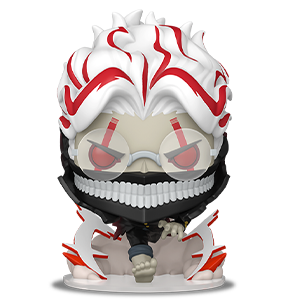
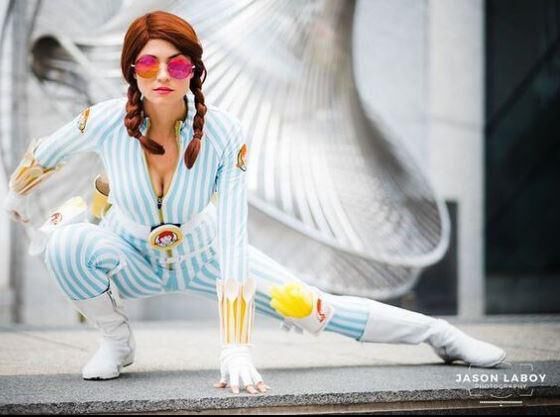

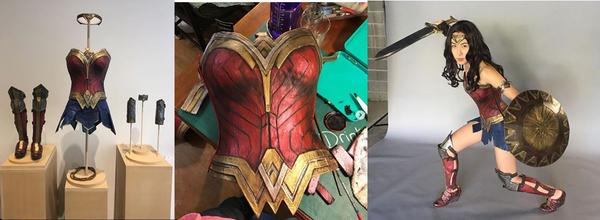

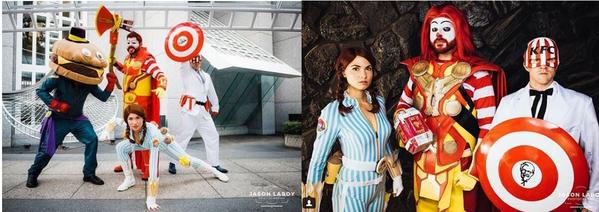
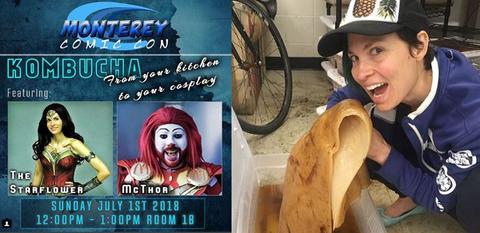
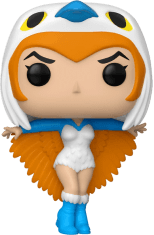
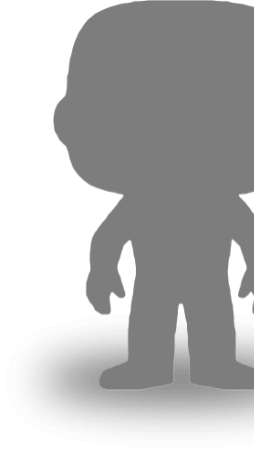
 Items in your cart may be affected with updated location.
Items in your cart may be affected with updated location.




































